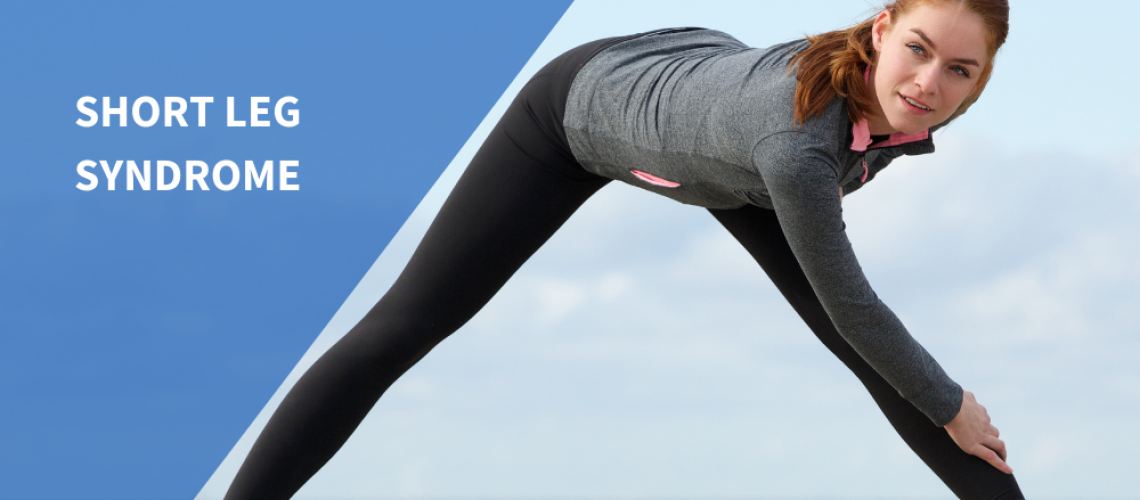If one leg is shorter than the other, this condition is called leg length discrepancy. It is relatively common: leg length discrepancy (LLD) affects up to 90% of the general population.
The difference in length can vary from an inch up to several inches. The vaster the difference, the more possible it is that the person will change their normal posture and walking pattern. Ultimately it can create a variety of symptoms, such as scoliosis, back pain and hip, knee and ankle problems.
Two main types of leg length discrepancies
- Functional discrepancy. The bones are equal in length, but the symmetry between the legs is broken due to problems with the foot, ankle, knee, hip, or pelvis.
- Structural discrepancy. This type transpires when either the thigh or shin bone in one leg is physically shorter than the same bone in the other leg.
Functional discrepancy
In children, the functional discrepancy can happen when a child is born with an issue that alters their hip alignment.
In adults, the functional discrepancy can result from chronic pain or arthritis and related problems in the spine, hip, or knee.
In some cases, if an athlete trains in a way that causes muscle imbalances or weaknesses, they may temporarily experience functional short leg syndrome.
Structural discrepancy
Structural discrepancy occurs when either the thigh bone or the shin bone is shorter in one leg than in the other. The condition typically presents at birth, but it can also happen as a child grows.
Common symptoms of leg discrepancy
Obviously, the main symptom of short leg syndrome is having one leg longer than the other. If the discrepancy is very small, there may not be any other symptoms.
However, a difference as small as 2 centimetres (cm) can cause to compensate for posture imbalances.
Moderate-to-severe cases of LLD can cause other symptoms such as:
- Movement issues, such as a walk with limp
- Pain in the back, hip, knee, or ankle
- Increased fatigue
- Decreased person’s overall quality of life
Potential causes of structural discrepancy
Bone injuries:
A bone fracture can slow down the growth of bones in one leg. This is more possible if the fracture has caused many pieces of bone to break apart or the surrounding muscle tissue has been damaged. Occasionally, a healing fracture can cause bone overgrowth.
Growth plate injuries:
Growth plates are areas of cartilage sitting near the end of the long bones. A growth plate injury may cause the bone to grow faster or slower than the bone on the opposite side of the body.
Bone diseases:
Bone diseases can cause damage to the bone’s growth plate. For instance, osteomyelitis. This damage ultimately leads to LLD.
Bone tumours:
Bone tumours and treatments can affect bone growth and contribute to LLD.
Juvenile arthritis:
Juvenile arthritis is a childhood autoimmune disease that causes inflammation of the tissue inside the joints. It can cause discrepancies in bone growth.
Diagnosis
Only a doctor can diagnose if you have one leg longer than the other. While waiting for an appointment, you could try the home test to see whether there is a possibility of LLD.
To take a home test, a person must:
- Stay barefoot.
- Lie on the floor with your feet together.
- Ask the other person to place their palms on your hip bones with one hand on each hip.
- Ask your assistant to gently move your hips from side to side for about 60 seconds. This movement helps to relax tense muscles.
- Have a helper check the position of your ankle bones. Asymmetrical ankles may indicate LLD.
It will be necessary to see a doctor confirm a leg length discrepancy and determine if it is a functional or structural problem.
Medical diagnosis. The most accurate and effective way to diagnose is 3D Standing CT Imaging. SCT scanning is a digital technique that has the advantages of displaying the entire lengths of the femurs and tibias while minimizing the measurement error.
Treatment
Treating functional LLD
As leg length discrepancies are a disorder of musculoskeletal problems which affect the muscles of the low back and lower extremities. In this case, the patient obtains short leg syndrome. The osteopathic manipulation technique is being considered a very effective technique in alleviating musculoskeletal problems.
Treatment for functional LLD usually includes:
- Physical therapy
- Massage therapy
- Specific exercises to correct imbalances and weakness. Stretching praxis to loosen and lengthen muscles is used to correct functional leg length discrepancy.
It is also important to seek the help of a physical therapist. The specialist can identify areas of imbalance and recommend appropriate exercises to improve posture.
Treating structural LLD
Correcting structural LLD is less straightforward. Treatment typically depends on the difference in length between the legs.
Correcting structural LLD is less uncomplicated. Treatment depends on the gap in length between the legs.
Most common treatment options include:
- Those who have mild LLD of less than 1 inch may benefit from wearing a shoe lift inside the shoe on the shorter leg. A shoe lift can relieve back pain and improve gait.
- Surgery may be necessary to treat more significant LLDs. They will also need extensive rehabilitation that includes exercise and physical therapy.
You should see a doctor if you suspect that you or your child has LLD to diagnose the condition and get recommendations for appropriate treatments.

